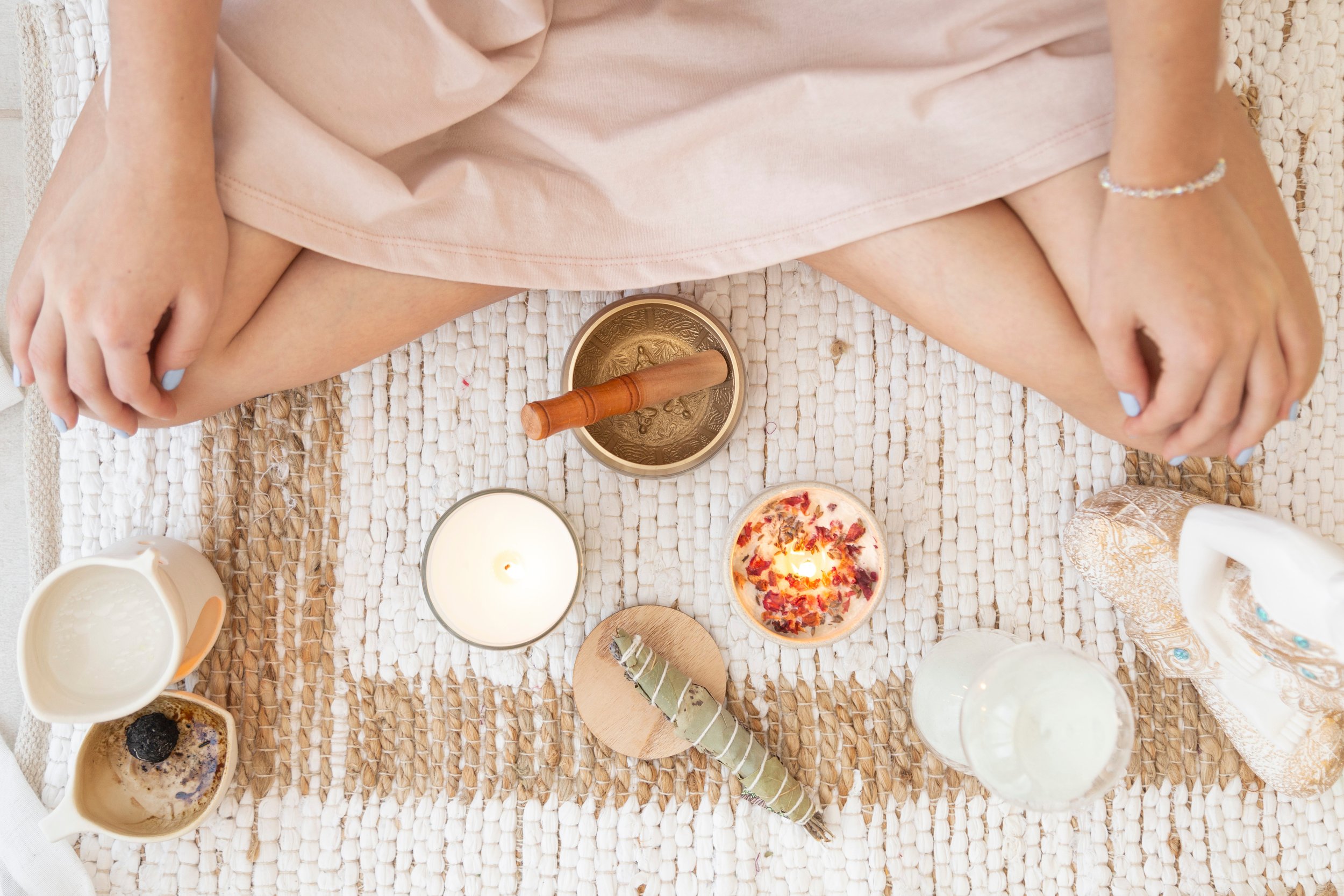Holistic Interiors: Designing from the Soul
Have you ever walked into a room and picked up on a strong feeling almost immediately? Interior spaces, especially public ones, are designed to make us feel a certain way. If we take this knowledge and apply it to our homes, we can harness the power of our intimate interior environments to make a positive impact on our mood and wellbeing each and every day. If your home is looking its best (whatever that means to you), it will FEEL its best to you. Think of it as a form of self-care for you and your home.
But in a world inundated with design trends and influencers pushing expensive products, it's easy to feel overwhelmed and disconnected from the spaces we inhabit. What if there was a different approach—one that honored your unique essence, supported your well-being, and didn't break the bank? Enter intuitive design.
Intuitive design is about tapping into your inner wisdom and allowing your space to evolve organically, guided by your instincts rather than external pressures. It's about creating spaces that reflect your true self, nurture your soul, and enhance your overall happiness and well-being.
Here are four ways embracing intuitive design can be truly transformative:
1.Soulful Spaces: When you design from the soul, you infuse your space with authenticity and meaning. Instead of following fleeting trends, you create a home that resonates with your essence—a place where you can truly be yourself and feel deeply connected.
Think about the last time you were in a space that felt really comfortable and safe and relaxing to you. Where was it? How did it look and feel? What kinds of materials were used, how much natural light and greenery were in the space? These kinds of observations will clue you in to the kind of elements you may want to incorporate in your own spaces.
2. Happiness and Well-Being: Your home should be a sanctuary—a place that uplifts your spirit and nourishes your soul. By designing intuitively, you create a space that supports your emotional well-being, reduces stress, and promotes a sense of peace and contentment.
Research has proven that our interior environments shape our thoughts and feelings. In our homes, it is important to create an environment that optimizes our feelings of safety, relaxation and calm. That isn't to say we can't create energizing spaces, like a home office or gym that helps motivate you to get things done, but the foundation of your home should be elements that support a healthy and balanced nervous system. Creating a restorative environment within your home can achieve this.
3. Cost-Effectiveness: Contrary to popular belief, designing intuitively doesn't have to break the bank. In fact, it’s often more cost-effective than traditional interior design. By trusting your instincts and repurposing items you already own, you can create a beautiful and soulful space on a budget.
Creating spaces that reflect who you are doesn't mean you have to overhaul your entire space, remodeling and buying all new furniture, lighting, accessories, etc. Thrifting is a great way to start collecting pieces you love. I found a mid-century replica of a Hans Wegner rocking chair a few years back for an incredible price. I had been searching for this chair for years, it was one we had in my childhood as my dad was a big fan of Danish Modern furniture.
I knew I wanted this piece and I knew exactly where it was going to go in my house for the longest time. But I just couldn't justify paying what I felt wasn't what I call "my price," for this piece that I coveted so much. I had seen listings on an expensive furniture auction website for close to a grand but the one I found was in great shape for a fraction of the price. Point being, it might take a little longer, but if you know what you are looking for, bargain hunting and sourcing until you find the right price is a great way to save big on projects.
This is an example of the Hans Wegner style MCM rocking chair I had as a child. This one went for over $1,000 on Chairish.
4. Less Pressure to Consume: Intuitive design isn't about pushing expensive products or keeping up with the latest trends. It's about honoring what truly speaks to you and bringing that into your space. By following your intuition, you're less likely to be swayed by external influences and more focused on creating a home that feels right for you.
You don't even need to purchasing anything to start transforming your home. You can repurpose items you already have or even just rearrange a bookshelf or space plan to see immediate changes in your space.
The design philosophy I’ve built my practice around is that your home should be a reflection of who you are—a place that nurtures your soul and brings you joy. By embracing intuitive design, you can create a space that not only looks beautiful but also supports your well-being on a deeper level. So trust your instincts, listen to your heart, and let your soul guide the way. Your dream home is closer than you think!






